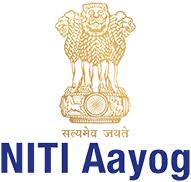Vision 2035: Public Health Surveillance in India
NITI Aayog has recently released a white paper titled Vision 2035: Public Health Surveillance in India. It is part of its work to strengthen health systems in India. The paper calls for integration of the three tiers of healthcare system in India viz. primary, secondary and tertiary into Ayushman Bharat. It also calls for enhanced lab capacity and expanded referral network. It proposes the use of a new data sharing mechanism involving the use of analytics, health informatics and data science.
Vision
The following are the vision of the document:
- To make the public health surveillance system more predictive and responsive and enhance the preparedness for action at all levels.
- To improve data sharing mechanism between centre and States.
- To provide regional and global leadership in managing events that aim at developing Public Health emergency systems of international concerns.
- To ensure individual privacy and confidentiality.
Current Scenario in India
According to the white paper, the following are the current conditions of health sector in India:
- 75% of re-emerging or emerging diseases are zoonotic.
- 61% of mortality and 55% of disability were caused by the Non-Communicable diseases.
- The prevalence and complexity of Anti-Microbial Resistance is growing. Between 2008 and 2019, the anti-microbial resistant gene has been found in more than 100 countries. In April, 2017, the Ministry of Health and Family Welfare launched the National Action Plan on Anti-Microbial Resistance.
Challenges in Public Health Surveillance
According to the white paper of NITI Aayog, the following are the challenges in Public Health Surveillance of India:
- The major implementation challenge is the system design issue. The data on the citizen utilization of service for treatment of diseases is different from that of the notification mechanisms for disease outbreaks.
- Similar data is collected by several organizations. There are no common platform or mechanism for the unified use of the data collected.
- The involvement of private sector in the surveillance is limited.
- Inadequate linkage of morbidity with mortality data.
- Limited usage of social, digital and print media in surveillance
- Limited focus on non-communicable diseases in the surveillance.
Month: Current Affairs - December, 2020


